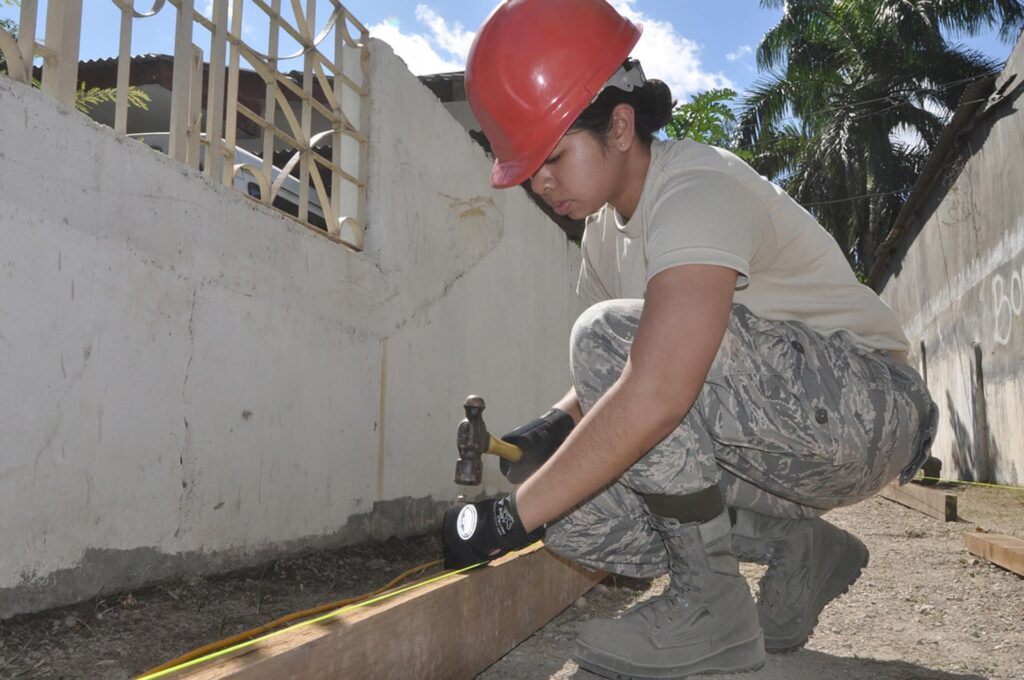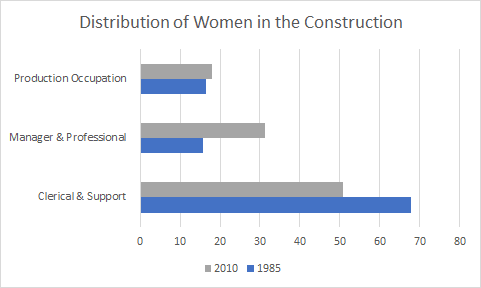Society has progressed and evolved in many ways. One significant change has been the increasing presence of women in the business world. Women have progressed in leadership and taken up challenges that were once considered too difficult for them to perform.
According to the U.S. Bureau of Labor Statistics, the number of women construction workers grew from 619,000 in 1985 to 1,1 million in 2007.
The number declined again due to the economic crisis and it was reported that there were 818,000 women in the construction in 2010.
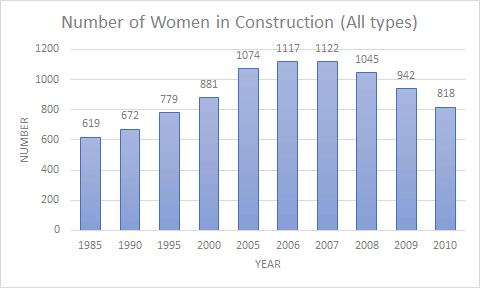
Women have progressed in various industries that were once dominated by men. In 2010, the top three industries that had the most women employees were:
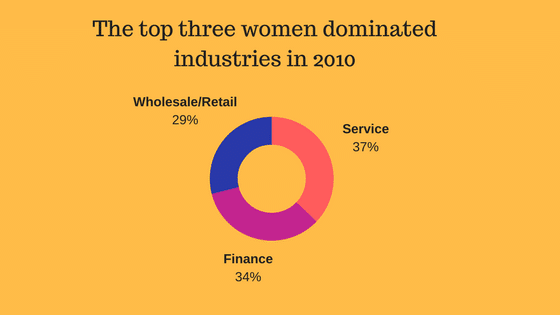
Currently, women only make up 9% of the construction industry. Even with such a small percentage, there are entities that have tried to support and help women more flourish in this industry.
Types of jobs women are doing in construction
According to U.S. Bureau of Labor Statistics, in the construction industry women primarily work in clerical roles, management and production. There has been a significant increase in all of these types as the graph shows.
Key factors that led to the shift in the industry
A collective effect of many factors brings about today’s changing construction industry. Let’s have a look at the individual factors based on facts and figures.
Education, Training and Skill Development
Education has played an unbelievably big role in driving this shift. According to the United Nations, the literacy rate of women has increased from 56% in 1990 to 70% in 2012. Due to the presence of women, there has been an significant increase in the primary, secondary and tertiary education levels.
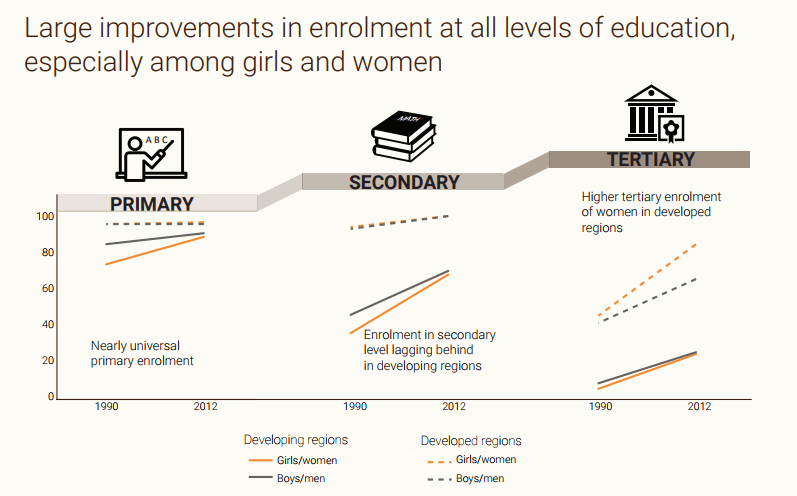
- Credit: Unstats.un.org
Women have been increasingly utilizing the benefits of education on a global level. There has been a steady increase of women in primary, secondary and tertiary levels on a global level.
The most significant one is the 80% attendance of women in 2012 in the tertiary level in developed nations.
This shows that a higher percentage of women as compared to men are moving to the management side. Even though education plays a vital role in the progression of women, it can be developed into a much stronger factor. In the construction industry it can help to make connections during your time learning a craft or field of study.
As the construction world continues to grow with technology alongside it, the education required to complete these tasks continues to get more advanced.
Growth in Female Business and Management Degrees
A degree specific to leadership can go a long way and have a trickle down effect on any industry. According to a study done by Catalyst, for the class of 2013 – 2014, women earned more degrees than men.

Such degrees have allowed women to not only enter the construction industry but has enabled them to perform as managers. In 2010, 31.3% of managers and professionals in the construction industry were women.
Specialization
Professionals created through specialization and skill development have allowed women to lead construction projects. Gaps in the job market expose lucrative careers without enough trained professionals to take those jobs.

Lynch, a plant and haulage firm that provides plant equipment and operators, promotes the presence of women in construction. Operations Director, Mark Kennedy encourages the need to have women as workers and active members in the industry. In an article, Lynch talks about the education system should provide more career options for women. He further elaborates that construction work should be a choice that they can make without perceiving it to be a man’s job.
“Our industry needs to do more and work harder with Schools to provide more varied careers advice and broadening pupils’ career horizons by speaking to their pupils and outline a range of education or training options, including dispelling the myth that women are not for construction related jobs.” says Mark Kennedy on a company blog post.
It is due to this joint effort by women and the construction industry that there has been a decrease in barriers to entry. Hence, the presence of women has increased from 16.5% in production/blue-collar work in 1985 to 18% in 2010 in the United States.
Networking and connections
In this modern and blissfully liberal era, there are various organizations that stand for equality and women’s rights. One such organization is the National Association of Women In Construction.
NAWIC’s mission is to advance the progress of women in the construction industry. To achieve that, NAWIC has outlined strategic goals; Awareness, Education and Infrastructure that are already underway. With these three goals in mind, the organization strives to create value for women in construction.
Want to know more about construction? Mental health in construction: The ugly truth
NAWIC’s mission is to equip women with the necessary training and skills required to work in the construction world. It is this support, that has lead individuals and local movements to enter the construction industry and pursue careers that they desire.
With the goals of establishing a foundation for women, NAWIC also holds an event called Women in Construction Week annually. The focus of Women in Construction (WIC) Week is to portray women as visible entities in the construction industry. The WIC event also provides a platform where successful women in the construction industry can create awareness for other women. This also aligns with their goal to create awareness.
Foundations and award systems such as these, create opportunities and network systems for women to find information and support. This allows them a chance to achieve their goals in a fairer and merit based system.
Technological advancements
Technological advancements alone have brought about a huge shift in the way the construction industry operates. The once archaic industry is incorporating solutions that will increase efficiency and time management. The use of drones and virtual reality systems are just one aspect of training and safety that wasn’t present just five years ago.

One such example is the introduction of smart sensors by Pillar Technologies to make construction sites safer. The sensors are placed to protect the construction site from fire, water and mold damage, allowing the construction industry to save millions in damages.
Similarly, drones are being extensively used in the construction sites to reduce waste and increase efficiency as mentioned in Fortune Tech.The article elaborates on how drones are becoming an essential part of the construction industry.
Advancements such as these are creating a high demand for skilled personnel and as a result are opening doors to anyone who wants to learn these skills. Shortage of skill personnel and knowledge workers is changing the way the construction industry views the labor force.
Women in software find a way
Speaking of technological advancements, software tools that increase the effectiveness of project management are being utilized in the construction industry and women have been grasping this opportunity.
Communication on and off site has completely changed from the projects of the past to today. Women are taking up roles in the tech and science industries that are effectively changing the entire way the construction world operates.
The U.S. Bureau of Labour Statistics shows that in 2016 women made their presence known in various fields such as computer programming and computer system analysts.
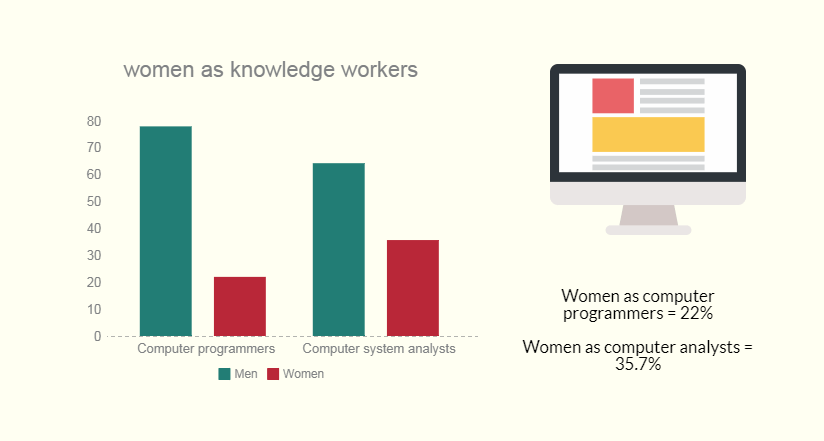
All these introductions to the construction industry lead one to think that does this job really need men?
Change in culture and mindset of women in construction
Another contributing factor is the desire and awareness of women to move forward. It started with women who were not satisfied with the roles and labels given to them and this mindset became a movement to change the way society perceives women to be.
One example is a change in Massachusetts where women are getting jobs in construction. The article describes a local movement by strong women who are removing barriers to entry in construction.
Similarly, a paper published by Clara Greed in 2000 outlines the factors that are responsible for the changes in the construction industry from the top and the bottom of the pyramid. Local movements by women started at the bottom are one of the factors that are bringing change in the industry.
After overcoming various challenges and barriers, women have proven themselves in every industry and as a result, have started to bring about change in the construction industry as well. This has let to a change in mindset of managers and recruiters, both men and women. The selection criteria is evolving and will continue to do so.
What will the future look like?
With all these changes, what lies ahead for the construction industry? According to the U.S. Bureau of Labor Statistics things are looking good for women in the upcoming years.
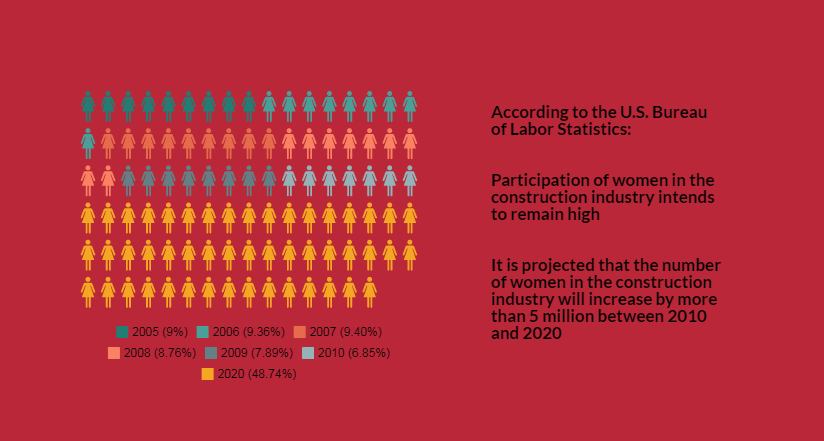
This rising trend is going to bring about major changes in the construction industry. There will be a higher percentage of women which will lead to more competition and lucrative salaries. Currently, the salary gap between men and women in the construction industry is much narrower than what an average woman makes in U.S. In construction, women earn on average 93.4 percent of what men make.
Equal pay will drive an increasing number of women to seek employment in an industry where they feel like they’re being treated fairly and their compensation is based on their abilities.
Let the market decide
With an influx of qualified individuals being added to the workforce, the direct effect will be a decrease in nepotism and shake up to the “the good ol’ boy network.” When margins continue to tighten up, managers will only be able to afford to work with qualified individuals or pay for it with the cost of using less capable people. The future of the industry will create an atmosphere where people with skills, knowledge and experience will be hired without restrictions on gender, race or religion.
Why is this good for construction?
I think we can all agree that diverse mindsets bring about creativity in every aspect. The same will happen in the construction industry. Good quality people will provide innovative ideas that will contribute to the evolving shift in the construction industry. Removing the barriers to entry for women will increase the talent pool in the industry. Thereby, allowing managers to choose the very best. As a result, there will be a drive for people to improve. Ultimately, a market with hardworking people will increase profits in the construction industry.

In short, there are various forces that are driving the change in the current construction industry. This overview of the state of women in construction industry shows that all these changes are for the better and will bring about a positive atmosphere in the construction industry.
